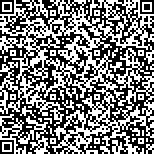| 引用本文: | 王锐峰,靳晓杰,刘昊,李程豪,张敏,李咪,李浩田,张宇,马欢欢,张月梅.基于中医药化学生物信息学探讨归芪白术方抑制葡萄膜黑色素瘤细胞增殖的物质基础[J].中国现代应用药学,2024,41(14):1-13. |
| WANG Rui-feng,JIN Xiao-jie,LIU Hao,LI Cheng-hao,ZHANG Min,LI Mi,LI Hao-tian,ZHANG Yu,MA Huan-huan,ZHANG Yue-mei.Study on the material basis of Guiqibaizhu prescription inhibiting the proliferation of uveal melanoma cells based on Traditional Chinese Medicine chemical bioinformatics[J].Chin J Mod Appl Pharm(中国现代应用药学),2024,41(14):1-13. |
|
| |
|
|
| 本文已被:浏览 514次 下载 383次 |

码上扫一扫! |
|
|
| 基于中医药化学生物信息学探讨归芪白术方抑制葡萄膜黑色素瘤细胞增殖的物质基础 |
|
王锐峰,靳晓杰,刘昊,李程豪,张敏,李咪,李浩田,张宇,马欢欢,张月梅
|
|
1.甘肃中医药大学;2.兰州大学第一医院眼科
|
|
| 摘要: |
| 目的 本研究基于课题组的研究基础,利用药效团模型-分子对接-结合自由能计算的虚拟筛选策略结合细胞生物学实验的中医药化学生物信息学方法,挖掘归芪白术方中靶向磷脂酰肌醇3-激酶(Phosphatidylinositide 3-kinases,PI3K),抑制葡萄膜黑色素瘤(Uveal melanoma,UM)细胞增殖的成分。方法 使用 Schr?dinger 2020-4 软件中 PHASE 模块构建 PI3K 抑制剂药效团模型;利用构建的药效团模型对归芪白术方化合物进行虚拟筛选,对符合药效团模型的成分进行分子对接和结合自由能计算,选择潜在抑制成分进行生物学实验评价。利用 CCK-8 和克隆形成实验检测潜在抑制成分对 UM 细胞的增殖情况;流式细胞术检测 UM 细胞周期和凋亡情况;JC-10 染色法检测 UM 细胞线粒体膜电位。结果 构建的药效团模型包括 2 个氢键受体、2 个芳环中心以及排除体积。CCK-8 实验结果显示槲皮素、川陈皮素、桔皮素在 10、20 μmol/L,桑辛素在 20、40 μmol/L 可抑制 UM 细胞的增殖。克隆形成实验显示不同浓度的槲皮素、川陈皮素、桔皮素、桑辛素均可明显抑制 UM 细胞的克隆增殖。流式细胞术结果显示桔皮素、槲皮素将 UM 细胞阻滞在 G0/G1 期,川陈皮素、桑辛素将UM细胞阻滞在 G2/M 期。JC-10 染色法结果显示槲皮素、川陈皮素、桔皮素、桑辛素均可使 UM 细胞的线粒体膜电位降低。结论 本研究基于中医药化学生物信息学的方法挖掘了归芪白术方抑制 UM 细胞增殖的物质基础,为中药复方的现代化开发提供线索。 |
| 关键词: 葡萄膜黑色素瘤 归芪白术方 中医药化学生物信息学 药效团模型 |
| DOI: |
| 分类号: |
| 基金项目:(No.82160857);2022年甘肃省高等学校产业支撑计划项目(No.2022CYZC-54) |
|
| Study on the material basis of Guiqibaizhu prescription inhibiting the proliferation of uveal melanoma cells based on Traditional Chinese Medicine chemical bioinformatics |
|
WANG Rui-feng1,2,3,2,4,2, JIN Xiao-jie1, LIU Hao3, LI Cheng-hao1, ZHANG Min3, LI Mi3, LI Hao-tian1, ZHANG Yu1, MA Huan-huan1, ZHANG Yue-mei5
|
|
1.Gansu University Key Laboratory for Molecular Medicine Chinese Medicine Prevention and Treatment of Major Diseases,Gansu University of Chinese Medicine;2.China;3.School of Pharmacy,Gansu University of Chinese Medicine;4.Department of Ophthalmology,the First Hospital of Lanzhou University,Lanzhou,;5.Department of Ophthalmology,the First Hospital of Lanzhou University,Lanzhou
|
| Abstract: |
| ABSTRACT:OBJECTIVE Based on the research foundation of our research group, this study utilized the pharmacophore model - molecular docking combined with the virtual screening strategy of free energy calculation and the chemical bioinformatics method of traditional Chinese medicine in cell biology experiments to investigate the components of Guiqibaizhu prescription that target phosphatidylinositol 3-kinase and inhibit the proliferation of uveal melanoma cells. METHODS The pharmacophore model of the PI3K inhibitor was constructed using the PHASE module in Schrodinger 2020-4 software. The pharmacophore model was utilized to conduct virtual screening of compounds from the Guiqibaizhu formula. The components that matched the pharmacophore model were determined through molecular docking and binding free energy calculations. Subsequently, potential inhibitory components were selected for evaluation in biological experiments. The proliferation of UM cells was detected using the CCK-8 assay and clonal formation assay. Flow cytometry was used to detect the cell cycle and apoptosis of UM cells. The mitochondrial membrane potential of UM cells was detected using JC-10 staining. RESULTS The pharmacophore model consists of two hydrogen bond receptors, two aromatic ring centers, and exclusion volumes. The results of the CCK-8 experiment showed that Quercetin, Tangerine, and Nobiletin at concentrations of 10 and 20 μmol/L, and cyrtin at concentrations of 20 and 40 μmol/L, were able to inhibit the proliferation of UM cells. The clonal formation experiment showed that Quercetin, Tangerine, Nobiletin, and Morusin, at different concentrations, could significantly inhibit the clonal proliferation of UM cells. Flow cytometry showed that UM cells were arrested in the G0/G1 phase by Tangeretin and Quercetin, while UM cells were arrested in the G2/M phase by Nobiletin and Morusin. The results of JC-10 staining showed that Quercetin, Nobiletin, Tangeretin, and Morusin could reduce the mitochondrial membrane potential of UM cells. CONCLUSION Based on the method of chemical bioinformatics in traditional Chinese medicine, this study explores the material basis for the inhibition of UM cell proliferation by the Guiqibaizhu prescription. It also provides insights for the modern development of traditional Chinese medicine prescription.
KEY WORDS:Uveal melanoma;GQBZP;the chemical bioinformatics method of traditional Chinese medicine;pharmacophore model |
| Key words: Uveal melanoma GQBZP the chemical bioinformatics method of traditional Chinese medicine pharmacophore model |
|
|
|
|
